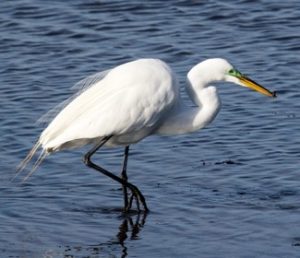Canvasback
Aythya valisineria

Physical: The canvasback is a duck with a very distinctive, high-sloped forehead. Males have a rusty head, a black chest and tail, and white body. Females are paler brown with a dusty body.
Habitat: Canvasbacks live in lakes, salt bays, estuaries, and freshwater marshes. Their range spans most of North America, parts of Alaska, western Canada, all of the continental US, and on into Mexico. Canvasbacks migrate seasonally. You will see canvasbacks in the Barnegat Bay during the winter.
Feeding: Like most ducks, canvasback feed by diving into the water. In shallow areas, they will stir up the sediment and stick the front half of their body into the water to pick through it. Their diet consists mostly of plants like pondweed, wild celery, and various sedges and grasses. However, they also eat mollusks, insects, and some small fish.
Breeding: Breeding individuals pair up during stopovers on the spring migration. Multiple males can court one female, displaying by snapping their head back and forth and making mating calls. Pairs build nests in marshes, on dense vegetation above water, or on dry ground. The female builds the nest, lays 7-12 olive-grey eggs, and incubate them for 23-28 days. Redhead ducks can also lay eggs in canvasback nests, in which case the female tends to lay fewer eggs.

Sign up for email or connect through social media.